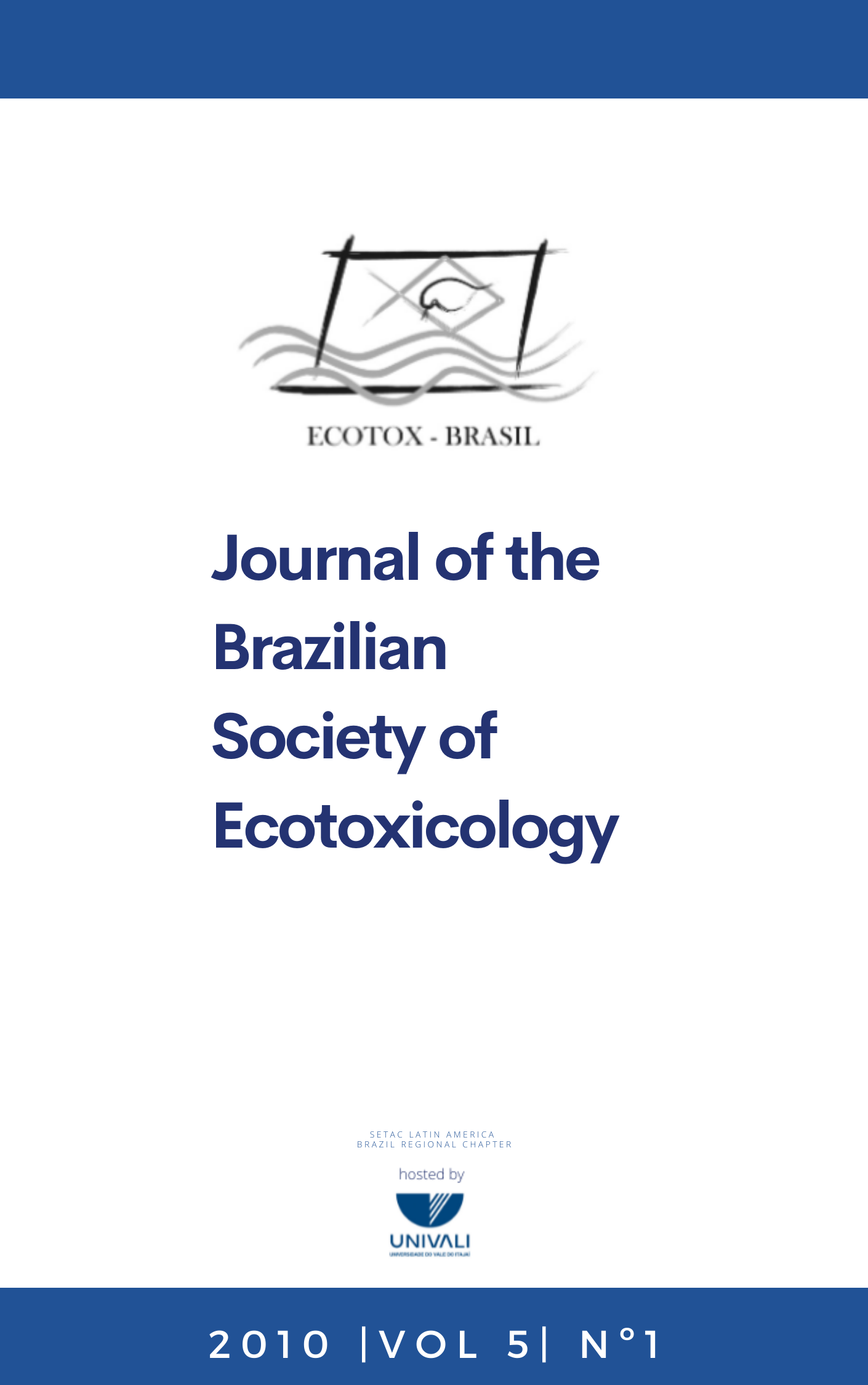Appraisal of Copepod Acartia tonsa (Dana, 1849) as a Chronic Toxicity Test Organism
Resumo
Ecotoxicological tests have been used as an important tool in assessing the environmental quality. In order to improve the use of marine and estuarine native organisms in chronic toxicity tests, this study evaluated the potential of the copepod Acartia tonsa in reproduction test. The sensitivity of A. tonsa was determined by exposing adults to 0.5, 0.75, 1.0, 1.5, 2.0 and 2.5 mg.L-1 of zinc sulphate (ZnSO4.7H2O). The production of eggs per female was measured after 48 hours of exposure, resulting in the EC50 of 2.05 mg.L-1 of zinc sulphate (CI 95% = 1.77 - 2.20 mg.L-1). Acute toxicity test was also performed, exposing adults to 2.5, 5.0, 7.5, 10, 12.5 and 15 mg.L-1 ZnSO4.7H2O. Compared to acute effects, the chronic test was 1.9 lower than the lethal concentration (LC50 of 3.80 mg.L-1). The sensitivity response of A. tonsa exposed to zinc presented an EC50 3 to 4 times higher than the others test organism described in the literature, so further studies are needed to improve sensitivity by developing and applying other sublethal endpoints.
Downloads
Downloads
Como Citar
Edição
Seção
Licença
Copyright © 2006 ECOTOX-BRAZIL
Copyright notice: It is a condition for publication that manuscripts submitted to this journal have not yet been published and will not be simultaneously submitted or published of elsewhere. By submitting a manuscript, the authors agree that copyright for their article is transferred to the Sociedade Brasileira de Ecotoxicologia (ECOTOX-Brazil) if and when the article is accepted for publication. The copyright covers the exclusive rights to reproduce and distribute articles, including reprints, photographic reproductions or any other reproduction of a similar nature, including translations. No part of this publication may be reproduced, stored in a retrieval system or transmitted in any form or by any means, electronic, mechanical, photocopying, recording or otherwise, without permission of the publisher.
Notice: While every effort is made by the JBSE, editors and editorial board to see that no inaccurate or misleading data, opinions or statements appear in this journal, they wish to make it clear that the contents of the articles and advertisements published herein are the sole responsibility of the contributors or advertisers concerned. Accordingly, the JBSE, the editorial board and editors and their respective employees, officers and agents accept no responsibility or liability whatsoever for the consequences of any inaccurate or misleading data, opinion or statement.




